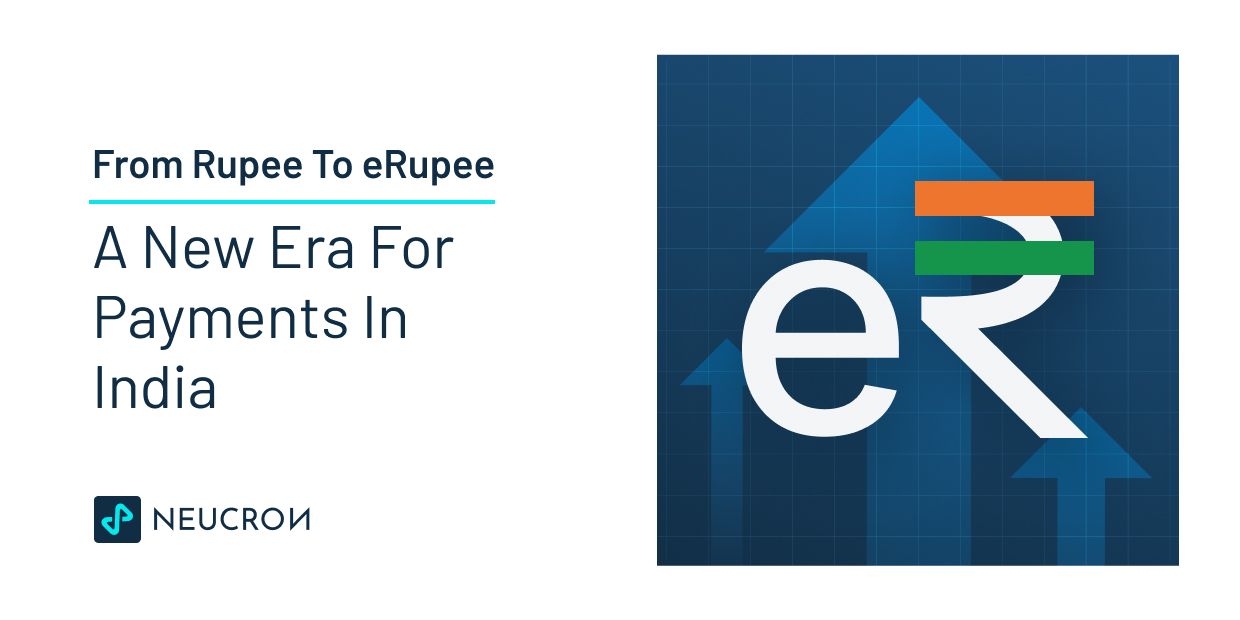As per the India Digital Payments Annual Report, India has set a remarkable milestone with ₹149.5 trillion in UPI and card transactions. UPI alone accounted for an astonishing 74.05 billion transactions, totaling ₹126 trillion in value.
This surge underscores the dynamic evolution of technology, syncing with the evolving needs of end-users and the diversity in payment methods. Since the payments are transforming, central banks must innovate to remain relevant. The Central Bank Digital Currency (CBDC) emerges as a crucial innovation.
The Reserve Bank of India envisioned it as the anonymous, seamless, and ubiquitous e-rupee. Let us explore the fundamentals of CBDCs, their global adoption, and their benefits.
What are CBDCs?
Launched by the RBI, the Central Bank Digital Currencies (CBDCs) represent digitized forms of a nation's fiat currency. They are created and overseen by central banking authorities. CBDCs are characterized by their complete centralization. The reserves of the central bank firmly anchor them.
The primary objective of CBDCs is to offer the benefits of both digital payment systems and fiat currencies. It merges the swiftness and ease of digital payment interfaces with the trust and constancy of fiat currencies.
CBDCs are versatile instruments designed for seamless deployment in everyday transactions, peer-to-peer transfers, and even as a secure store of value.
The Primary Reason Behind the Evolution of CBDCs by RBI
Issuing traditional paper currency and circulation involves a protracted and costly government process. For instance, the substantial expenses incurred in the complete lifecycle of a ₹100 paper note are estimated to be around 15% to 17%. This expenditure encompasses printing, distribution, and return due to spoilage over four years. The escalation in cash circulation exerts strain on distribution and storage channels.
Regulatory bodies face amplified challenges in printing, distribution, and storage as the volume of physical currency in circulation burgeons. It also introduces threats such as security breaches, spoilage, and counterfeiting.
Besides, carrying physical currency involves the potential for loss or theft. The e-rupee positions central banks with enhanced control over usage and distribution. It mitigates risks associated with physical currency and facilitates cross-border transactions.
Understanding the Different Types of CBDCs – Retail vs. Wholesale CBDCs
The retail CBDCs are meant for the private sector, non-financial businesses, and the general public. These digital currencies function as a direct digital equivalent to physical cash. Retail CBDCs are typically accessible through digital wallets, allowing users to make everyday purchases. The issuance of retail CBDCs directly connects central banks with end-users.
On the other hand, Wholesale CBDCs are tailored for financial institutions and large-scale transactions between them. Instead of catering to individual consumers, Wholesale CBDCs facilitate interbank transactions, nostro transfers, and bond settlement transfers. These CBDCs streamline the settlement processes between financial institutions and optimize liquidity management in the broader financial system.
Cash-based System for Retail CBDC
The cash-based system for retail CBDC mimics the accessibility and ease of use associated with physical currency but in a digital form via e-wallets. Integrating programable payments with Retail CBDC enables smart contracts or automated features into digital transactions.
This allows for flexibility and customization in payment processes, enhancing transaction efficiency and functionality. Users can set predefined conditions or rules, automate aspects of the payment process, and simplify complex financial arrangements.
Account-based System for Wholesale CBDC
Wholesale CBDC operates in an account-based system, primarily serving financial institutions. For example, the RBI utilizes wholesale CBDCs for the call-money market between banks, involving short-term interbank lending.
The usage of wholesale CBDCs enhances the efficiency, speed, and security of transactions within the call-money market. It contributes to overall stability in the financial system while improving the functioning of interbank lending activities.
Global Adoption Trends for CBDCs
Around 114 nations are assessing the CBDCs, with over 60% progressing to an advanced stage.
India’s CBDC Initiative
In December 2022, RBI initiated the pilot phase for the retail e-rupee. It aimed to create a digital counterpart resembling paper currency and assess user engagement. The deployment of the digital currency follows an intermediary model, with eight prominent banks participating initially.
As of February 2023, the pilot project is underway in five cities. It involves closed user groups consisting of invited merchants and customers. The RBI issues CBDCs to intermediary banks, which, in turn, provide digital wallets to end-users. Transactions with the e-Rupee do not accrue interest but retain the option for conversion into deposits.
The Contribution of Blockchain Technology in Advancing CBDCs
Blockchain employs cryptographic techniques and decentralized consensus mechanisms to ensure the security of CBDC transactions. The decentralized nature of blockchain eliminates the vulnerability associated with a single point of failure. It reduces the risk of fraud, hacking, and unauthorized access. Cryptographic encryption adds an additional layer of security, safeguarding the integrity and confidentiality of CBDC transactions.
Blockchain's transparent and decentralized ledger ensures that every CBDC transaction is recorded and accessible to authorized parties. This transparency enhances the financial system's accountability, allowing transaction verification and audit.
Unlock the Potential of CBDCs with Timechain’s Top-Notch Solutions
CBDCs represent a pivotal stride towards a digitized, efficient, and inclusive global financial system. As potential future developments unfold, CBDCs offer heightened security, transparency, and financial accessibility on a global scale.
Timechain Labs offers blockchain-enabled solutions for hassle-free utilization of CBDCs. Our highly scalable solution empowers central banks to issue CBDCs, a pivotal move for national economies. The core of our innovative offerings lies in Neucron wallets which provide a secure repository for CBDCs.
We facilitate the programmability of CBDCs worldwide. At the heart of our innovation is the Digital Rupee Interlinking Bridge (DRIB) technology, which enables the programmability of CBDCs in India.
With our blockchain-powered forex market of CBDCs, we provide the best liquidity exchange rates to wholesale and intermediary banks. Our platform enables straightforward fund tracking as they are transferred in record time.
Book a demo today with Timechain to explore the next era of finance with CBDCs!
References
https://www.pwc.in/research-and-insights-hub/future-of-digital-currency-in-india.html
https://www.nttdatapay.com/blog/future-of-currency-cbdc-in-india/

